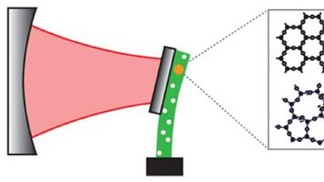Jun 1 2013
EPFL researchers find a new method for the preparation of non-classical states of a mechanical oscillator.

Mechanical resonators are devices or systems that can amplify the frequency of a wave, when that wave's frequency matches the resonator's natural frequency of vibration. They are typically used in electric circuits to produce precise frequencies. An example of a mechanical resonator is a quartz crystal, which converts mechanical vibrations into an oscillating voltage, and is used in quartz clocks. A fundamental question has been whether such macroscopic mechanical resonators can be made to exhibit quantum mechanical behavior. In a recent Physical Review Letters publication, EPFL researchers have proposed a new approach to tackling the issue.
Cavity optomechanics studies the interaction mechanical objects and the radiation pressure of light on low-energy scales. The field has grown rapidly, often using nanostructures that are “cooled” to states with only a few mechanical quanta, referred to as phonons. However, the optomechanical interaction responsible for this effect is not yet strong enough in real experiments to also allow the observation of dynamics at the level of a single photon being sufficient to displace a mechanical oscillator by more than its zero point motion. Such a breakthrough would enable the creation of non-classical states of mechanical motion, e.g. states containing only one mechanical quanta (a Fock state). Aside from the interest to quantum metrology, an observation like this would allow to probe the interface between classical physics and quantum mechanics.
Scientists from the Laboratory of Photonics and Quantum Measurements (LPQM1) at EPFL, and their colleagues from the University of Innsbruck now propose a different approach to preparing and observing a mechanical oscillator in such non-classical states. Instead of the usual method of increasing the optomechanical coupling of the mechanical resonator, they suggest allowing the phonons to interact with strain-sensitive defects in the mechanical resonator material, thus modifying the resonator's mechanical motion.
In order to achieve single-phonon states, the mechanical resonator must be non-linear, since any classical driving force acting on a linear resonator would generate classical, not quantum, states. Glass microresonators or amorphous surfaces of silicon nanostructures that are typically used in cavity optomechanics contain natural defects that can be described as the tunneling of atoms between different conformational configurations. The atoms' tunneling rate depends on the strain in the material, which is in turn modulated by its mechanical vibrations, thereby realizing a direct coupling between the mechanical resonator and the defect.
Reference:
Tomas Ramos, Vivishek Sudhir, Kai Stannigel, Peter Zoller and Tobias J. Kippenberg, “Nonlinear Quantum Optomechanics via Individual Intrinsic Two-Level Defects”, Physical Review Letters 110, 193602 (2013).